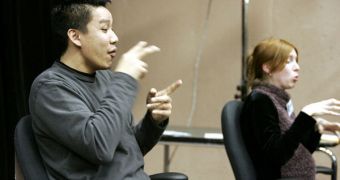Ever since sign language was invented, it has brought up a single enduring question: how is it that those speaking and gesturing are able to do both with the same speed? It naturally takes more time to form a sign than to speak a word, yet interpreters seem to be able to finish both their sentence and their sign representation at roughly the same time. This paradox has had researchers wondering for many ears, and now they are finally taking a deeper look into the phenomenon, Technology Review informs.
A team of Princeton University researchers believes that it may now have the answer. The expert in charge of the group, Andrew Chong, says that the explanation for this apparent paradox is in fact rather simple – there is greater redundancy in spoken English than in gestured English. The team reveals that just one of the signs in the gestured language contains a lot more information than a phoneme, which is the building block of spoken language. While this may be just stating the obvious, what's interesting is the way the team arrived at this conclusion.
It calculated the entropy of the American Sign Language, that is to say all its possible arrangements and outcomes. In the course of their studies, which looked at the frequency of hand shapes posted by users on popular sign-language websites, the investigators determined that the information content of a single hand gesture was about 0.5 bits less than the theoretical maximum. For comparison, a phoneme contains 3 bits less data than the ideal maximum, the team says.
“Entropy might be higher for hand shapes than English phonemes because the visual channel is less noisy than the auditory channel […] so error correction is less necessary,” Chong says. “Difficulties in visual recognition of handshapes could be solved by holding or slowing the transition between those handshapes for longer amounts of time, while difficulties in auditory recognition of spoken phonemes cannot always be easily solved by speaking phonemes for longer amounts of time,” the researchers add. Details of their work appear in the journal arXiv, in a paper entitled “Frequency of Occurrence and Information Entropy of American Sign Language.”

 14 DAY TRIAL //
14 DAY TRIAL //